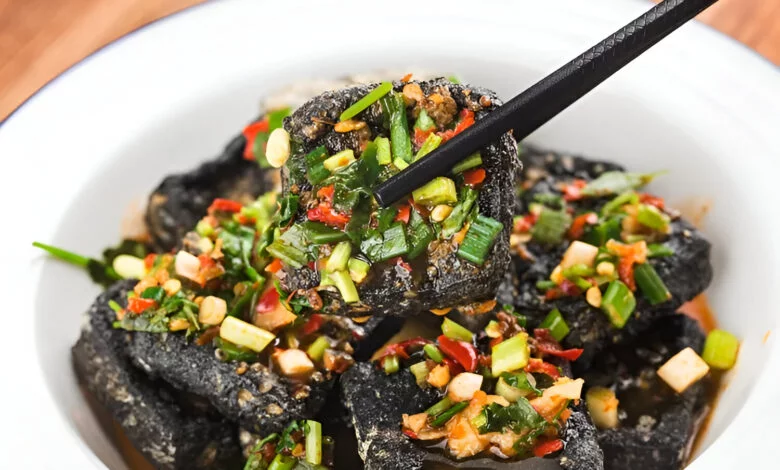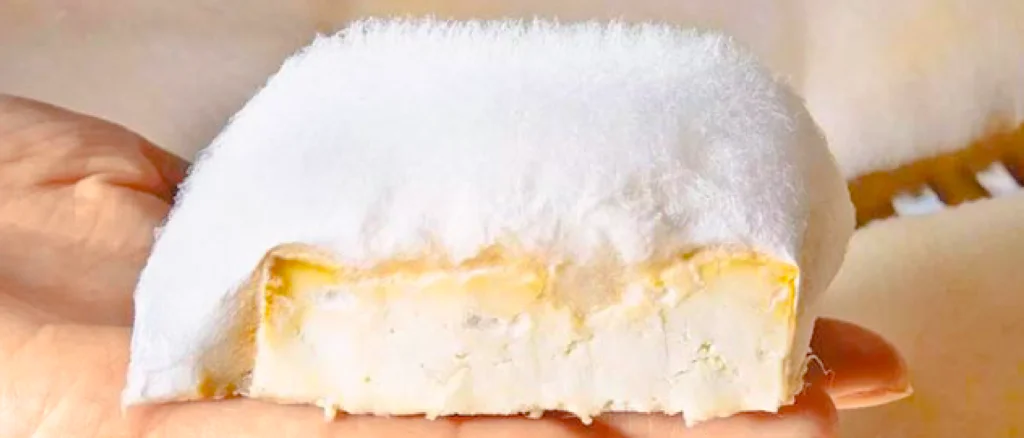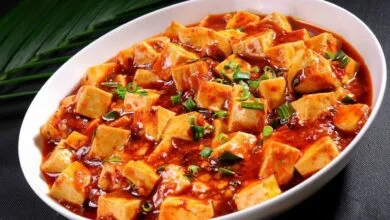
Table of Contents
Introduction
China’s rich and diverse culinary heritage offers a plethora of unique dishes that reflect its vast geographical and cultural landscapes. Among the many foods that capture the imagination and challenge the palate, hairy tofu and stinky tofu stand out as particularly distinctive. These fermented tofu varieties are celebrated for their unconventional flavors and textures, representing the innovative spirit of Chinese gastronomy. This article provides an in-depth examination of hairy tofu and stinky tofu, delving into their histories, production processes, cultural significance, and the sensory experiences they offer. By exploring these unique foods, we gain insight into broader themes in Chinese culture, including attitudes towards fermentation, the role of regional cuisines, and the balance of tradition and innovation in culinary arts.
Historical Background and Origins
Stinky Tofu: A Storied Past
The origins of stinky tofu are enveloped in legend and historical anecdotes. One popular story attributes its discovery to Wang Zhihe, a scholar during the Qing Dynasty (1644-1912). Unable to sell his tofu due to an abundance of the product, Wang experimented with fermenting it in brine. This accidental creation led to the development of the strong-smelling delicacy known today. The spread of stinky tofu throughout China was facilitated by its portability and long shelf life, making it a popular choice among travelers and traders.
Stinky tofu’s preparation varies significantly across regions, each bringing a unique twist to the dish. For instance, in Hunan province, known for its bold and spicy cuisine, stinky tofu is often fermented longer, resulting in a more intense flavor. In contrast, in Taiwan, stinky tofu is typically marinated in a milder brine and served with sweet and sour pickled vegetables, catering to different regional palates.
Hairy Tofu: A Regional Specialty
Hairy tofu, on the other hand, has a more specific geographical origin. It is a traditional delicacy from the Huizhou region, particularly popular in the city of Huangshan in Anhui province. The unique feature of hairy tofu is the fine white mold (Rhizopus oryzae) that grows on its surface during fermentation, giving it a characteristic «hairy» appearance. This mold, while visually distinctive, is harmless and adds a special texture and flavor to the tofu.
The history of hairy tofu is less well-documented than that of stinky tofu, but it is believed to have been developed as a way to preserve tofu in the humid climate of Huizhou. The local culinary tradition, known as Huizhou cuisine, is famous for its complex techniques and emphasis on preservation, which includes the fermentation of various foods. Hairy tofu, with its unique mold-covered appearance, is considered a refined example of this culinary art.

Production and Fermentation Process
The Science and Craft of Stinky Tofu
The production of stinky tofu involves a meticulous fermentation process that is as much an art as it is a science. The tofu is typically cut into blocks and soaked in a brine solution that can vary significantly in its composition. Common ingredients include fermented milk, Chinese herbs, bamboo shoots, mustard greens, and even meat. The brine’s composition and the duration of fermentation are critical in determining the final flavor and odor intensity of the tofu.
The fermentation period can range from a few hours to several months. A shorter fermentation results in a milder product, while extended fermentation periods produce a more potent aroma and flavor. During this process, the tofu undergoes a transformation, breaking down proteins and fats into amino acids and fatty acids, which contribute to its umami taste. The distinct odor of stinky tofu comes from sulfur compounds produced during fermentation, similar to those found in certain cheeses.
Crafting Hairy Tofu
Hairy tofu’s production is a more delicate process, focusing on the controlled growth of mold. Fresh tofu blocks are first lightly salted and then stored in a warm, humid environment to encourage the growth of Rhizopus oryzae mold. This mold forms a fine, white fuzz on the surface of the tofu, which is the hallmark of hairy tofu. The growth of this mold is carefully monitored, as it not only affects the texture but also the flavor profile of the tofu.
The fermentation period for hairy tofu is generally shorter than that for stinky tofu, typically lasting just a few days. This brief fermentation allows the tofu to develop a unique texture—crispy on the outside due to the mold, yet soft and creamy inside. The mold also imparts a mild, earthy flavor, somewhat akin to that of certain cheeses, making hairy tofu a unique culinary experience.
Sensory Experience: Taste, Texture, and Aroma
Stinky Tofu: A Sensory Challenge
Stinky tofu is renowned for its strong, pungent aroma, which can be overwhelming for those encountering it for the first time. The smell is often described as a combination of rotten garbage, blue cheese, and strong body odor. However, for those who appreciate it, the aroma is an integral part of the stinky tofu experience, signaling a deeply flavorful bite to come.
The taste of stinky tofu, surprisingly, is much milder than its smell would suggest. The tofu itself is typically soft and creamy inside, with a crispy outer layer when fried. The flavor profile includes a rich umami taste, with subtle nutty and sour notes depending on the specific fermentation process used. The contrast between the strong odor and the relatively mild, savory flavor makes stinky tofu a unique culinary experience.
Hairy Tofu: A Delicate Delight
Hairy tofu offers a subtler sensory experience compared to stinky tofu. The mold on the tofu’s surface gives it a distinctive appearance and a slight crunch when eaten, adding an unusual texture that is both crispy and tender. The aroma of hairy tofu is much milder, with earthy and slightly musty notes that are reminiscent of mushrooms or certain cheeses.
The flavor of hairy tofu is also more delicate, with a mild umami taste complemented by nutty and slightly sour undertones. The fermentation process enhances the tofu’s natural flavors, making it a refined dish that is appreciated for its subtlety and complexity. The unique texture and taste of hairy tofu make it a delicacy that is enjoyed by connoisseurs of Huizhou cuisine.
Cultural Significance and Regional Variations
Stinky Tofu: A National Favorite
Stinky tofu is a beloved snack across China and has even gained international recognition. It is a staple of Chinese street food culture, often sold at night markets and roadside stalls. The dish’s popularity varies by region, with each area offering its own take on the classic recipe. For example, in the Jiangnan region, stinky tofu is often served with a sweet and spicy sauce, while in the north, it might be accompanied by garlic paste and pickled vegetables.
The cultural significance of stinky tofu extends beyond its role as a popular snack. It is often seen as a symbol of Chinese culinary adventurousness and the country’s long history of fermented foods. Festivals and events celebrating stinky tofu are held in various parts of China, drawing both locals and tourists eager to experience this iconic dish. Despite its divisive aroma, stinky tofu holds a cherished place in Chinese cuisine and culture.
Hairy Tofu: A Regional Treasure
While not as widely known as stinky tofu, hairy tofu is a treasured dish in its native region of Huizhou. It is considered a specialty of Huizhou cuisine, which is known for its emphasis on traditional methods of food preservation and fermentation. Hairy tofu is often featured in local festivals and celebrations, where it is showcased as a unique culinary offering.
The cultural significance of hairy tofu is closely tied to the identity of Huizhou cuisine and the broader cultural heritage of Anhui province. It represents the region’s innovative approach to food, blending traditional techniques with local ingredients to create something distinctive. For those outside the region, encountering hairy tofu can be a unique and memorable experience, offering a taste of Huizhou’s rich culinary traditions.
Health Aspects and Nutritional Value
Stinky Tofu: A Probiotic Powerhouse
Like many fermented foods, stinky tofu offers various health benefits, particularly related to gut health. The fermentation process introduces beneficial bacteria, such as lactobacillus, which are known to promote a healthy digestive system. These probiotics can aid in digestion, enhance nutrient absorption, and strengthen the immune system.
Nutritionally, stinky tofu is rich in protein, low in calories, and contains essential amino acids, making it a valuable dietary component. The fermentation process also increases the bioavailability of nutrients, such as calcium and iron, making them easier for the body to absorb. However, it is worth noting that the strong smell, caused by sulfur compounds, might be a deterrent for some people.
Hairy Tofu: A Nutrient-Rich Delicacy
Hairy tofu also offers health benefits, particularly due to the mold that grows on its surface. The Rhizopus oryzae mold is a good source of enzymes and probiotics, which can aid digestion and promote gut health. The fermentation process used to create hairy tofu can also enhance the availability of certain nutrients, making them more accessible to the body.
In addition to its probiotic benefits, hairy tofu is high in protein and contains a variety of vitamins and minerals. It is a low-calorie food, making it a suitable option for those looking to maintain a healthy diet. However, as with other fermented foods, individuals with specific dietary restrictions or allergies, particularly to mold, should consume hairy tofu with caution.
Culinary Uses and Pairings
Stinky Tofu: Versatility in Flavor
Stinky tofu is a versatile ingredient that can be prepared and served in various ways. The most common method is deep-frying, which creates a crispy exterior while retaining a soft and creamy interior. It is often served with a dipping sauce made from soy sauce, garlic, chili oil, or a mixture of vinegar and pickled vegetables. In some regions, stinky tofu is steamed or boiled and served in a spicy broth.
The strong flavor of stinky tofu pairs well with bold and spicy condiments, which help to balance its pungent aroma. It can be served as a standalone snack, an appetizer, or as part of a larger meal. Some modern culinary experiments have even incorporated stinky tofu into fusion dishes, combining it with Western ingredients and techniques.
Hairy Tofu: A Gourmet Experience
Hairy tofu is usually prepared by pan-frying or deep-frying, which enhances its unique texture. The slight crunch from the mold on the surface contrasts pleasantly with the soft interior. It is typically served with a simple sauce, such as soy sauce or a light chili oil, to highlight the tofu’s subtle flavors without overwhelming them.
In traditional Huizhou cuisine, hairy tofu might be stir-fried with vegetables or incorporated into hot pots. Its delicate flavor makes it a good pairing with lighter sauces and milder ingredients, allowing the unique taste of the tofu to stand out. For those looking to experience the dish in its most authentic form, visiting the Huizhou region and sampling it at local eateries is highly recommended.
Personal and Societal Perceptions
Stinky Tofu: A Love-It-Or-Hate-It Delicacy
Stinky tofu is often considered an acquired taste, with people typically either loving or hating it. For many Chinese people, particularly those from regions where it is popular, stinky tofu is a beloved comfort food that evokes memories of home and childhood. The dish’s bold flavor and aroma are seen as part of its charm, and trying stinky tofu is often viewed as a rite of passage for adventurous eaters.
However, the strong smell can be off-putting to some, particularly those unfamiliar with fermented foods. Outside of China, stinky tofu is sometimes met with skepticism or aversion, with its odor often being described as unpleasant or even repulsive. Despite this, it has found a niche audience among food enthusiasts and those interested in exploring diverse culinary traditions.
Hairy Tofu: A Delicacy for the Adventurous
Hairy tofu, while less controversial than stinky tofu, still presents a unique culinary challenge. Its unusual appearance, with the white mold covering, can be surprising for first-time eaters. However, those who are willing to try it often find that the taste and texture are surprisingly mild and pleasant.
In its home region, hairy tofu is celebrated as a local delicacy and a symbol of Huizhou’s culinary heritage. For outsiders, it offers a unique gastronomic experience that is both intriguing and rewarding. The dish’s relative rarity outside of Huizhou adds to its allure, making it a sought-after item for food tourists and culinary explorers.
Conclusion
Hairy tofu and stinky tofu are remarkable examples of the diversity and ingenuity found in Chinese cuisine. While they may not be to everyone’s taste, these dishes offer a unique opportunity to explore the rich traditions of Chinese food culture, particularly the art of fermentation. Both types of tofu challenge conventional notions of flavor and aroma, encouraging eaters to expand their culinary horizons.
Stinky tofu, with its bold smell and complex flavors, represents the adventurous spirit of Chinese street food, while hairy tofu, with its delicate texture and subtle taste, exemplifies the refined techniques of Huizhou cuisine. Together, they showcase the versatility and creativity inherent in Chinese cooking, highlighting the importance of regional specialties and the value of preserving traditional culinary practices.
As global interest in diverse cuisines continues to grow, dishes like hairy tofu and stinky tofu serve as ambassadors of Chinese culinary heritage. They remind us of the richness and complexity of China’s food culture and the joy of discovering new and unexpected flavors. Whether you are a seasoned fan or a curious newcomer, these unique tofu varieties offer a memorable gastronomic adventure worth exploring.

